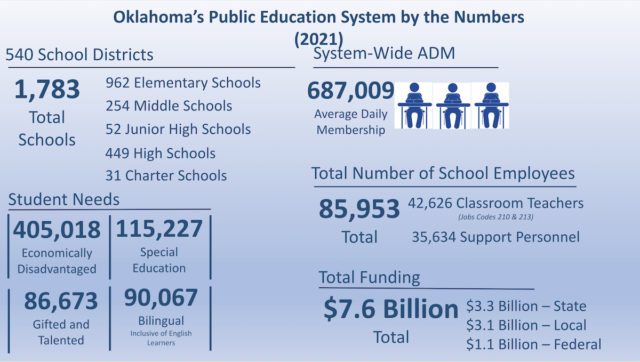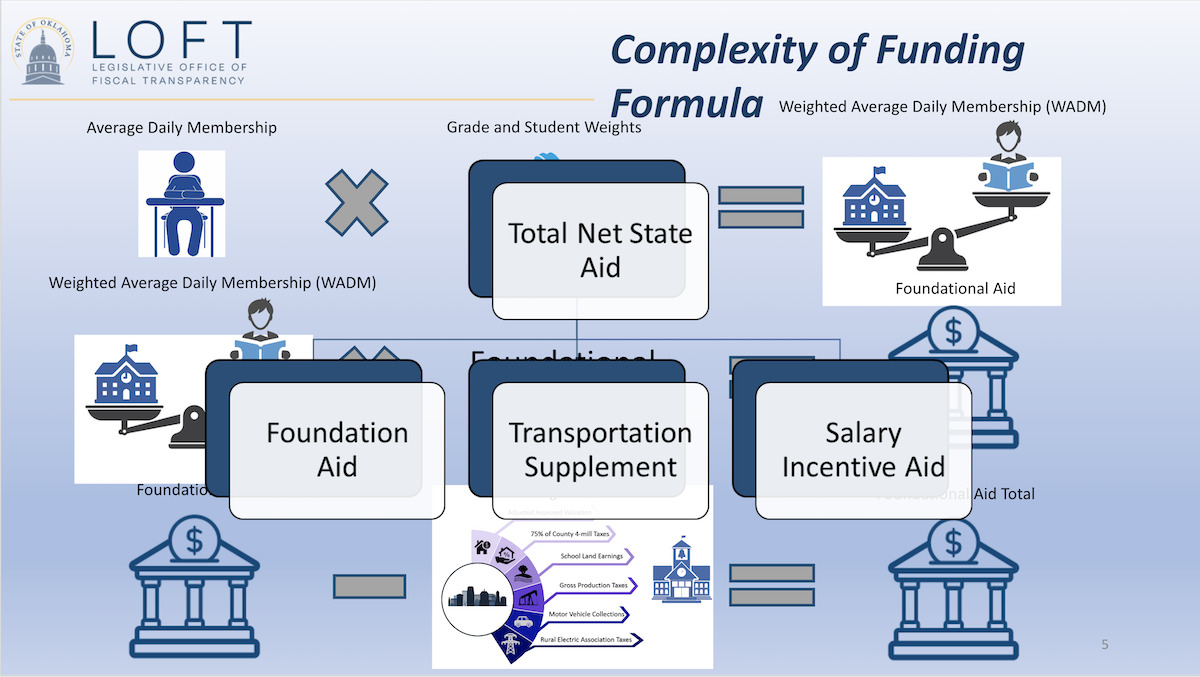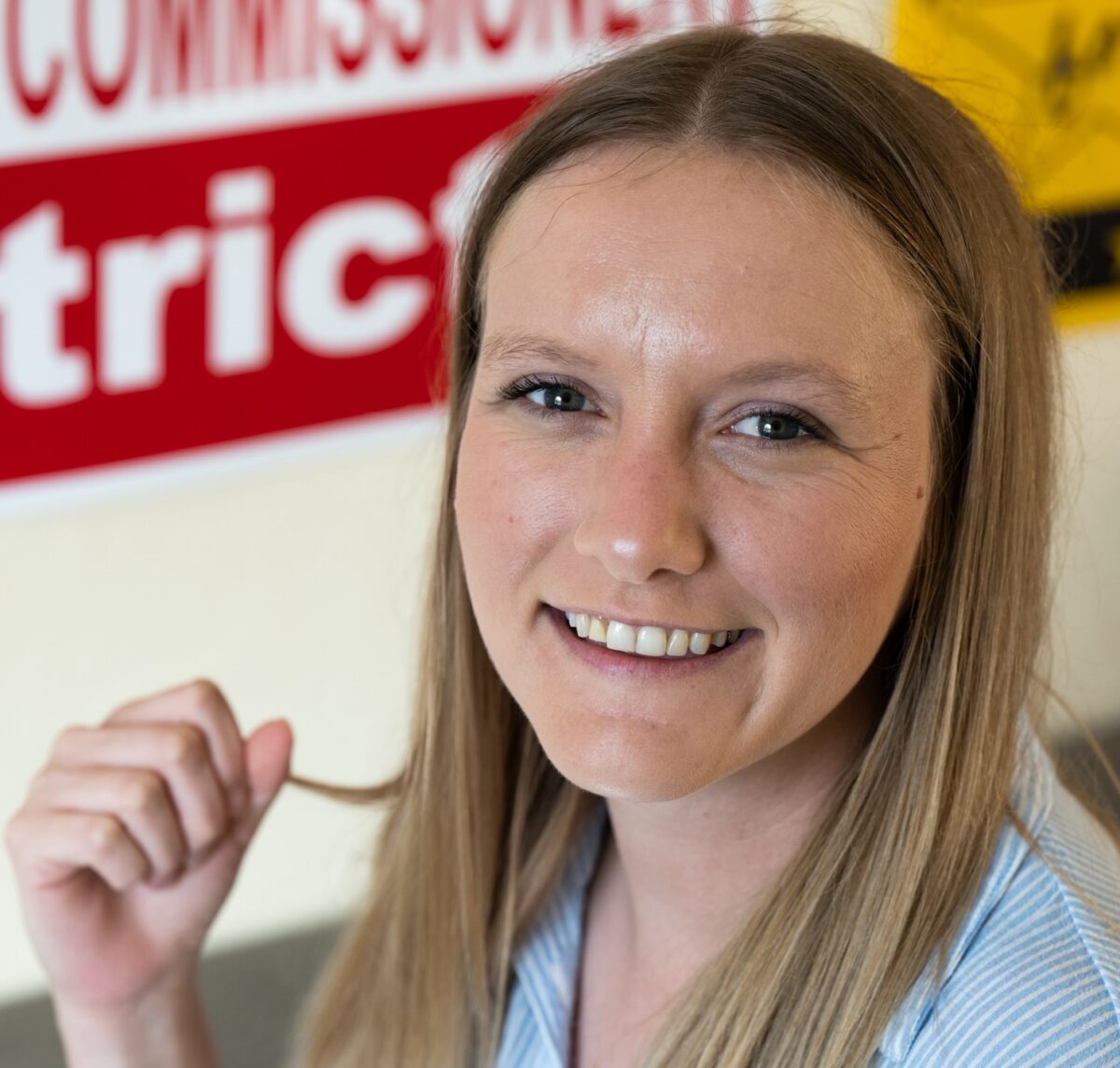

Lawmakers should adjust the Oklahoma education funding formula by providing additional money to school districts with high concentrations of poverty and through amending the definition of “bilingual” to match the definition of “English learners” for financial purposes, according to a report presented to legislative leaders Tuesday.
The Legislative Office of Fiscal Transparency’s report also recommended expanding the scope of financial reviews available in the Oklahoma Cost Accounting System, or OCAS.
“With this evaluation, the Legislative Office of Fiscal Transparency sought to provide a comprehensive picture of the total funding for the state’s public common education system and assess where and how funds are spent,” LOFT executive director Mike Jackson told members of LOFT’s Legislative Oversight Committee.
Findings within the evaluation report (embedded below) include:
- Oklahoma’s funding formula is outdated and fails to account for the needs of today’s students;
- Despite increased investments in common education, the portion spent on student instruction has remained flat;
- Current school finance governance limits accountability of educational expenditures; and
- The Legislature’s ability to assess educational investments and outcomes is hindered by the limited delivery of comprehensive data.
The Legislative Oversight Committee is co-chaired by Senate Appropriations and Budget Chairman Roger Thompson (R-Okemah) and House Appropriations and Budget Chairman Kevin Wallace (R-Wellston). During Tuesday’s meeting, Wallace said he believes there will be bills filed for the 2023 legislative session surrounding the state’s education funding formula.
“There were great discussions, good findings, rebuttals and points of clarification made today and in multiple meetings that we had with [our committee] in the LOFT presentations,” Wallace said. “We don’t take a vote on this or approve it. It’s not a record of factual facts. It is statistics and data and calculations.”
State Superintendent of Public Instruction Joy Hofmeister attended the meeting with other members of the State Department of Education to provide responses to the report’s findings. State Secretary of Education Ryan Walters was not present for the meeting.
LOFT provides the Oklahoma Legislature with data analysis, state agency financial reviews and budgetary recommendations. The Legislative Oversight Committee is tentatively scheduled to meet next on Aug. 31 to discuss LOFT’s report on the Department of Mental Health and Substance Abuse Services.
‘Greater and more diverse needs than ever before’

The LOFT report on common education states that, while functional, Oklahoma’s education funding formula has remained largely unchanged since 1981 and does not reflect the academic needs of today’s students.
During Tuesday’s meeting, LOFT program evaluator Bradley Ward said an overly broad definition of bilingual students includes students who are already proficient in English but who also speak other languages at home. Ward said that resulted in $10.1 million being distributed to students who are not English learners in Fiscal Year 2021. He also said state funding generated for economically disadvantaged students is not applied to specific supports or services, but rather is directed to districts’ general operating funds.
Ward explained that Oklahoma’s state aid formula uses “weights” to identify and assign more funding to students with greater educational needs. Every student is assigned a base weight of “one” with additional weight added to students who may, for example, have special needs or be bilingual.
“Since 2011, the numbers of students receiving special education and bilingual weights have increased 25 and 49 percent respectively,” Ward said. “This demonstrates how the needs of students are becoming more complex and resource intensive.”
Oklahoma is the only state in the seven-state region that does not provide additional support for school districts with “concentrated poverty.”
“In 2022, 72 percent of all Oklahoma school districts had more than 50 percent of their students classified as economically disadvantaged, making this the area of greatest need in Oklahoma’s public education system,” Ward said.
In the report, LOFT identified opportunities to simplify and modify Oklahoma’s education funding formula in order to make it easier to determine the fiscal impacts of changes and to allow the state to meet students’ needs better.
Policy suggestions regarding the funding formula include:
- Requiring OSDE to produce and publicly deliver to the Legislature a comprehensive annual report on school financing, expenditures and progress on targeted academic indicators;
- Amending the definition of “bilingual” for funding purposes to match the definition of “English Learners” and updating the notation for students receiving bilingual weight based on annual federally required assessments;
- Providing additional funding to school districts with high concentrations of poverty; and
- Raising the student weight for economically disadvantaged and bilingual students to 0.34, making it equal to the weight of gifted students.
Hofmeister said the OSDE agrees with LOFT’s conclusion that the state aid funding formula does not fully account for the needs of students.
“Oklahoma’s students have greater and more diverse needs than ever before. As such, OSDE advocated for changes to the funding formula to better address these needs. Specifically, OSDE supported the recommendations of the state-aid task force as presented in its report and the resulting legislation to implement them in SB 362 from 2019,” Hofmeister said. “OSDE also requested and supported efforts to change the bilingual weight to an English learner weight, including HB 1963 of 2020.”
Hofmeister said the intention of bilingual student funding is to provide additional financial support for students who face challenges speaking and learning English. However, as the current definition is applied to the formula, many students who already are proficient in English continue to generate such funding for their schools.
“The complicated nature of the system should be overhauled, directing funds to those who are identified (as) English learners instead,” Hofmeister said. “Such additional funding would then end when those students reach English language proficiency. Ideally, there would also be a mechanism to ensure such funding is being used to support English learners.”
Rep. Meloyde Blancett (D-Tulsa) said it’s interesting to say the funding formula needs to better reflect the needs of students, but she questioned what that means practically.
“Does that mean a community-based school system where there are wrap-around services? Does that mean extra teachers in the classroom?,” Blancett said. “That’s going to dictate cost, which is what we need to look at from a budgetary perspective. That’s where my mind is going right now. How do we fix this?”
Hofmeister said there needs to be a balance so resources are going places where the needs are greatest, while also serving all students.
$5.8 million in questionable OCAS coding

The LOFT report also pointed out an alleged lack of accountability over education funding through the Oklahoma Cost Accounting System. The OSDE uses OCAS to capture financial data reported by school districts and also assists districts with using the accounting system through training and by providing a detailed manual describing codes, categories and definitions.
The report states that, in examining expenditures coded under “instruction,” LOFT identified more than $5.8 million in questionable expenditures.
“Inconsistent application of codes by districts limits the usefulness of the data collected. OSDE’s role in school expenditure accountability is limited,” Ward said. “OSDE relies on districts to properly input data. While it is not practical for OSDE to review every expense reported by districts, there are opportunities for OSDE to have a more active role in ensuring the information reported by districts accurately reflects its financial decisions.”
In order to address these concerns, Ward said the OSDE could expand its sample review of expenditures within the system and identify the most misused codes. The agency could then provide additional training to school districts on how to use those codes, he said.
Ward said LOFT spent 16 hours in the OCAS system over the evaluation process and found that, during the 2020-2021 school year, districts spent about $257,425 on firearms and ammunition coded amongst 14 separate function codes.
“There is oversight of educational funding by OSDE, but not true accountability,” Ward said. “The miscoding directly illustrates the challenges in ensuring funds are spent in the areas intended.”
OSDE director of government affairs Carolyn Thompson said LOFT brought the firearms and ammunition reporting to the department’s attention, prompting the department to investigate further.
“We were surprised to see some of these as well and went to investigate why this might have been happening and discovered each individual district uses their own accounting system,” Thompson said. “There are many vendors that districts can choose from for their own accounting system, and then those report to OCAS individually. What we found whenever we brought this to the districts’ attention is they all said they did not spend this money on firearms and ammunition and on further investigation determined that the vendor incorrectly mapped the code. The vendor incorrectly mapped a child nutrition code to a firearms and ammunitions code.”
Hofmeister said the OSDE partially agrees with LOFT’s finding regarding OCAS, but she maintained that the agency has and will continue to fully execute its responsibility in the oversight of public funds within the bounds of the law. Hofmeister also said that OCAS is not a mechanism for forensic or investigative auditing.
“In recent years, expectation of OSDE’s role in district expenditures seems to have changed significantly from statute,” Hofmeister said. “In response to recently changing expectations, OSDE has hired a financial services auditor and an investigator within OCAS, as well as an investigator within the legal office.”
Hofmeister said OSDE has also changed administrative rules and created new processes to identify financial risk that could lead to the mismanagement of public funds. She said new codes, such as management organization codes, have also been added to the OCAS system, as required by recent legislation.
“While no accountability system can be all things to all people and there is always room for improvement, OSDE wholly believes that it has implemented OCAS fully and will continue to work to achieve that compliance with existing state law and increase the opportunities that we have sought,” she said.
Read full report





















